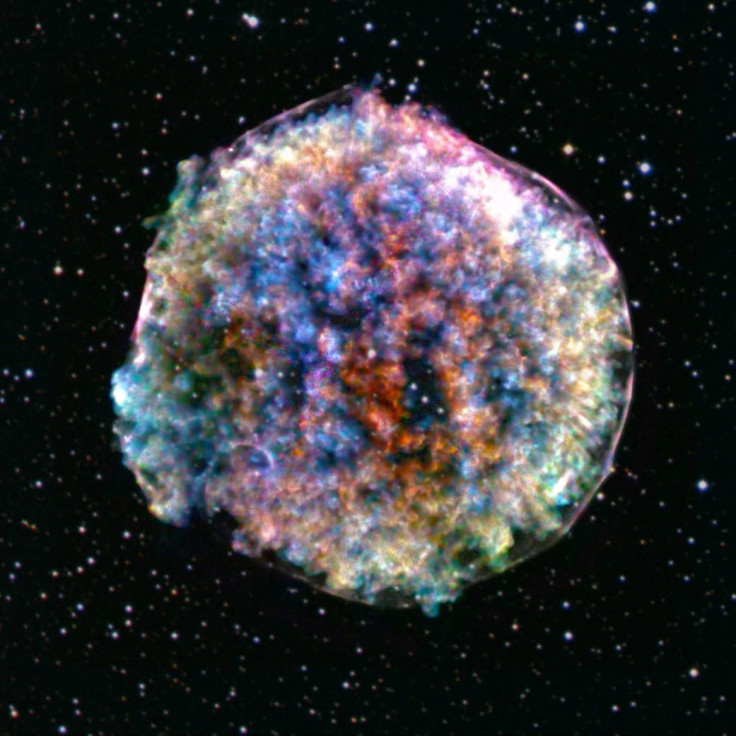NASA Captures New Image Of Tycho Supernova

NASA was able to capture new images of the Tycho Supernova using its Chandra X-ray Observatory. The new images allowed the agency to finally understand the cause behind the unique appearance of the supernova remnant.
The Tycho Supernova, also known as SN 1572, was first discovered by a Danish astronomer named Tycho Brahe in November 1572. Early observations traced the location of the supernova in the constellation Cassiopeia. According to astronomers, it is categorized as a Type Ia supernova, which means it was caused by the violent explosion of a white dwarf.
Unlike other supernova remnants, SN 1572 has a very distinct look, which is characterized by its clumpy appearance. For years, modern scientists have been baffled by these clumps.
“In its two decades of operation, NASA’s Chandra X-ray Observatory has captured unparalleled X-ray images of many supernova remnants,” the agency said in a statement.
“Chandra reveals an intriguing pattern of bright clumps and fainter areas in Tycho,” NASA continued. “What caused this thicket of knots in the aftermath of this explosion? Did the explosion itself cause this clumpiness, or was it something that happened afterward?”
Through the latest images captured by the Chandra X-ray Observatory, NASA was able to narrow down the possible explanations behind the Tycho Supernova’s clumpy appearance. After comparing the latest images from the previous ones, the agency was able to identify several patterned areas using the observatory’s X-ray imaging capabilities.
“This latest image of Tycho from Chandra is providing clues,” the agency explained. “To emphasize the clumps in the image and the three-dimensional nature of Tycho, scientists selected two narrow ranges of X-ray energies to isolate material (silicon, colored red) moving away from Earth, and moving towards us (also silicon, colored blue).”
“The other colors in the image (yellow, green, blue-green, orange and purple) show a broad range of different energies and elements, and a mixture of directions of motion,” NASA added. “In this new composite image, Chandra’s X-ray data have been combined with an optical image of the stars in the same field of view from the Digitized Sky Survey.”
Based on the collected data, NASA concluded that some of the clumps within the supernova were caused by the debris generated by the initial explosion. The other clumps found in SN 1572 were formed by multiple smaller explosions within the supernova.
Although NASA isn’t quite sure yet what caused these multiple explosions, the agency theorized that the supernova may have triggered several ignition points, which can be compared to numerous sticks of dynamite being detonated in different locations.
© Copyright IBTimes 2025. All rights reserved.





















